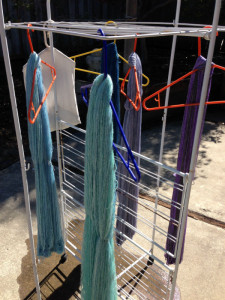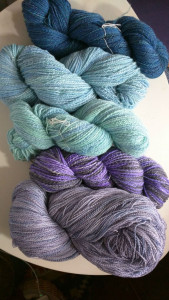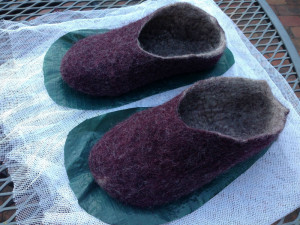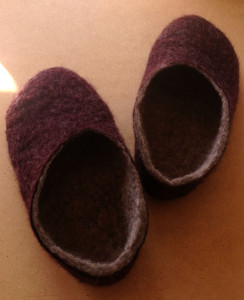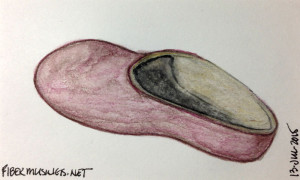Don’t you just love those stripes???? The stripes were in the dyed into the fiber. All I did was split it in half lengthwise and spun the yarn as a 2 ply. You can see the yarn in progress in my previous post, Miracle Fabric. Unfortunately, I ran out of yarn about one color repeat short. I had to finish it off with some Cascade 220 Superwash. It’s slightly denser than my handspun but it worked. Now, I just need to add buttons.
This was such a quick and fun knit. Much more fun than the first time around. Why? Minimal ends to weave in. Unfortunately, I didn’t take notes the first time around either. I zipped along on the sweater before I realized that I forgot to increase for the cuff fullness. Riiiiip.
To ensure I don’t make this mistake again, I decided to write out line by line instructions for myself. After a bit, I wanted stitch counts. So, I stopped once again and built a spreadsheet that calculated my line by line and my ending stitch count by row. Yes, I’m a geek. Anyway, I think it took me longer to build the spreadsheet than it did for me to knit the darn thing. It helped that I took the train into the city to have a tea and chat session with Penny.
Stats:
- Yarn: Handspun and Cascade 220
- Needles: US #4 (3.5 mm) 32″ or 40″ circulars; these were perfect length to work all the way around with enough room to leave the side stitches on the needle while working the center back panel
A few knitting notes on this BSJ (so I don’t lose my notes and have to start all over again next time!):
- I used double decrease around a center knit stitch so the decreases match the increases.
- I used a 2 stitch I-Cord all around.
- I made 3 - 2 stitch buttonhole in the I-Cord edge. (3-2-8-2-8-2)
- At the bottom corners, I added a single (unattached) I-Cord stitch before and after the centered/corner stitch to make it a clean turn.
- At the neck corners, I added 2 (unattached) I-Cord stitch to ease the corner.
- I grafted the end of the I-Cord to the 2 cast on stitches at the beginning.


